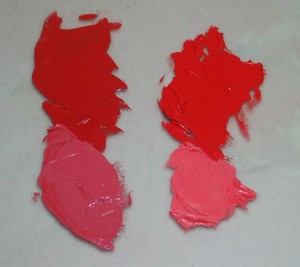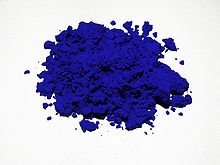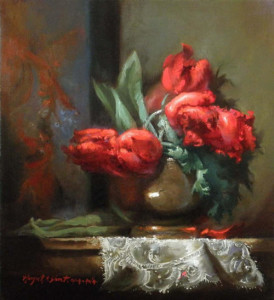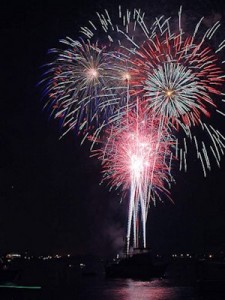Shown here are two reds used by contemporary artists. The color on the left is vermilion straight from the tube on the top, mixed with a little white on the bottom. The color on the right is a very modern pigment, cadmium red. As you can see, the vermilion has a slightly more subtle tone to it, whereas, the cadmium is very shockingly bright. To … [Read more...] about Modern vs. Historic
vermilion
A Discriminating Palette
Greek painters, especially those from the 5th century BCE, were remarkably skilled and created many hundreds of vases and other paintings. The many varieties of surfaces include terracotta plaques, walls, ceilings, panels, wood, marble, ivory, leather, parchment, and ceramic slabs. They used some of the most beautiful natural and synthetic pigments … [Read more...] about A Discriminating Palette
When I Grow Up, I Want to Be an Art Forger
Now I do not aspire to go underground or "non-legit" with my painting techniques, but art forgery is quite a fascinating topic. One of the best ploys Eric Hebborn suggests is to purchase an artistically worthless old painting, say, from an antique shop or art auction. Wood panel or canvas, each would be naturally aged and seasoned, ready to scrape, … [Read more...] about When I Grow Up, I Want to Be an Art Forger
Doorman’s Record Tulipa
Cupid's Arrow 11x10 Oil on Linen Margret E. Short copyright 2010 CM Russell Museum Masters in Miniature 2010 July 29 through September 11 Great Falls, Montana Being the hopeless and helpless mad scientist, I just can't help playing around with colors. Over the past while, RED has been on my palette and has been manipulated and pushed like … [Read more...] about Doorman’s Record Tulipa
Things That Go Boom!
Now, ancient Egyptians did not have or use fireworks, but it is quite interesting that some of the minerals used in pigments since antiquity are what makes the beautiful colors in fireworks displays. The Chinese first invented gun powder and fireworks circa 900 AD, and their culture retains a legendary fascination with things that go … [Read more...] about Things That Go Boom!
Dragons and Elephants
Without going too deeply into the scientific technicalities of cinnabar/vermilion properties, the differences between the two pigments are: cinnabar is created by the combination of mercury and sulfur through a natural process and found in mines in many locations, and vermilion is made by combining mercury and sulfur in very hot temperatures … [Read more...] about Dragons and Elephants





